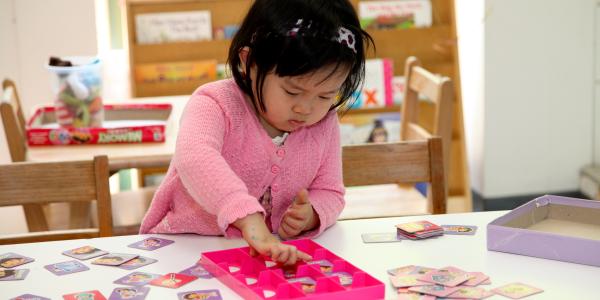Searching for the Meaning of Play

You are here
My first introduction to Vivian Paley was, ironically, through radio. One of my favorite radio programs was (and still is) “This American Life,” a transcendent look into human nature. Each show explores a theme, and in June of 1996 one of the themes was “The Cruelty of Children.” A portion of the show was devoted to Vivian’s famous experiment into play exclusion as brought to life in her 1992 book You Can’t Say You Can’t Play.
During the radio piece, Vivian caught my attention with her intentional shake-up of her classroom’s social hierarchy. While the children might have been young and egocentric, classroom social strata extends well beyond the primary grades. I especially appreciated the plight of Angelo, having myself felt somewhere near the bottom of the social ladder at various times throughout both lower and upper grades.
As a writer and a young parent (my son was four when I heard this piece), I marveled at her ability to tell a story while also deftly and respectfully revealing the minds and hearts of children. Although I didn’t have words for it at the time, her remarkable ability to provide evidence of children’s ideas and actions was naturalized teacher research. Perhaps Vivian’s eloquence and intelligence seeped into my subconscious that day as well; about 18 months later I began my career as an early childhood educator.
One of my favorite Vivian Paley books is Wally’s Stories. Here again, Vivian weaves together the power of personal and collective narratives with a careful and perceptive consideration of Wally and his classmates. Thanks to Vivian’s words, I know Wally and care deeply about him. She reminds me that with time, opportunity, and support, children can share their power, intention, and creativity with the adult world.
As a writer and a young parent, I marveled at her ability to tell a story while also deftly and respectfully revealing the minds and hearts of children.
When I began teaching at Bing Nursery School (Stanford University’s play-based laboratory school) in 2006, I was drawn even closer into Vivian’s estimable orbit. My classroom was exploring the power of children’s narratives as expressed through dramatic reenactments of familiar picture books. Two colleagues and I were fortunate enough to be invited to present about our classroom’s story plays, as we called them, at the 2007 NAEYC Annual Conference in Chicago. Knowing that Vivian hailed from the Second City, I wondered if she would be interested in our investigation of story plays. Vivian could only be reached by mail, so I sent her a hopeful letter, to which she sent a handwritten response: she would love to come.
Vivian was very kind and supportive after attending our NAEYC presentation, noting that she felt we had taken her work to another level. Her thoughtful response to our scaffolding of children’s narratives inspired me to invite her to Bing. After several letters back and forth, we nailed down a date and our entire teaching staff waited in anticipation.
For one glorious day in February of 2009, the Bing teachers basked in the wisdom and wonder that was Vivian Paley. We asked her a multitude of questions and engaged in authentic and meaningful conversation with her as together, like true constructivists, we searched for the meaning of play. She gave us permission to take chances, to make mistakes and to keep asking questions. She reassured us that play around weighty themes, such as death, was important but that we also needed to be sensitive to the emotional impact of those themes on ourselves and our colleagues. Perhaps best of all, Vivian shared with us her storytelling processes, inviting the teachers to participate as she brought them to life. In those moments where story, creativity and collaboration intersected, our classroom became her classroom and I turned into Wally or countless other students whose voices and ideas were lifted up by this masterful teacher. I was perhaps the most fortunate Bing teacher during Vivian’s visit, in that I was able to drive her to and from the airport and take her out to dinner. Our wide-ranging conversations about art, writing, creativity, and teaching remain etched into my memory.
Vivian Paley constantly reminded me to view children as competent and to view classroom problems as opportunities.
Vivian and I remained in touch for many years after her Bing visit, writing back and forth about work, about play, and about the many questions that inspired us. She constantly reminded me to view children as competent and to view classroom problems as opportunities. I deeply appreciated her patient friendship and her humble mentorship. Vivian’s desire to create space for stories, her ability to listen fully and her longing to elevate, illuminate and understand children’s play all continue to push me to be a better teacher.
Todd Erickson, MA, is a head teacher at Bing Nursery School, Stanford University’s play-based laboratory school. During his 22 years in the classroom, he has written, presented and mentored on topics including play, storytelling, mathematics, block building, and social and emotional development. [email protected]